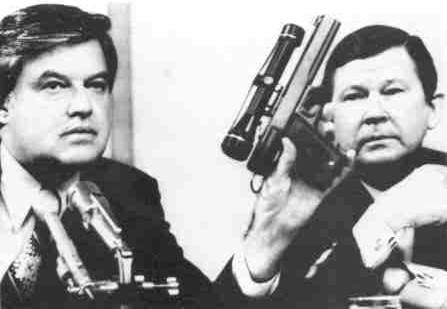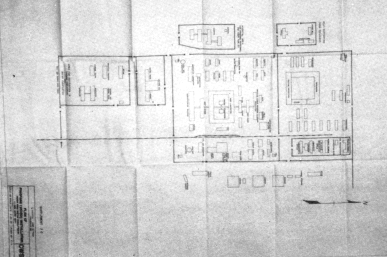These are a few scans from my sources. They are arranged by country.
Great Britain



Workers harvesting Anthrax at Porton Down. The wand-like apparatus that the man on the right is holding was used to "suck" the layer of bacteria off the culture and deposit it in glass flasks.

This is a picture of Heydrich's car a few hours after the attack of Operation Anthropoid.

This is the second X filled bomb given to the Anthropoids. They were all captured by the Germans and executed. Believing the operation to be an exclusively Czech effort, they took their anger out on the population of Lidice. 10,000 were arrested. The male population was shot, the women and children dumpeb in concentration camps and the whole city was destroyed.

A British soldier is being decontaminated after an excersice in Germany.
Canada

A view of Grosse Ille, Quebec. The buildings on the left are dissenfection sheds converted to mass-produce anthrax. Those at the center are the barracks wich housed the military personnel.

A close-up of one of the sheds. Both pictures were taken in 1989.

An aerial view of the testing facility at Suffield, Alberta. The site estends over 50 square miles and was used to test biological and chemical weapons developed by Canada, Britain and the United States. This picture was taken in May 1945
United States

Canadian scientists visiting Camp Detrick, located near Frederick, Maryland. Beginning third from left: G.B.Reed, James Craigie, Charles Mitchell, E.G.D. Murray and Camp Detrick's new scientific director, Orem Woolpert. The tank in the background and many others like it were used to grow large quantities of bacteria.


Operation Ranch Hand called for the massive spraying of Agent Orange to deffoliate the jungle in Vietnam. Many American and Vietnamese troops that were exposed to the chemical developed diseases and later died. The issue of its use is still regarded as highly controversial.

A tunnel rat emerging from a Viet Cong bunker. The Americans used gas to flush the Vietnamese from their tunnels. They vehemently denied that this was chemical warfare.

A CIA poison dart gun, produced at an inquiry regarding the agency's dissobediance of Nixon's orders to destroy stocks of Biological weapons and cease research in 1975.

American troops in their anti-contamination suits in the Persian Gulf.
Japan

Murray Sanders, the man appointed by MacArthur to investigate Unit 731.

A Japanese propaganda poster of 1940, promising prosperity to China if they co-operate, death if they do not.

Ishii's map of Pingfan.

An aerial view of Pingfan. The square building to the right is Ro Block.

A plane of Unit 731's aerial division.

A Japanese baloon bomb.

Pingfan in ruins.

The last known photograph of Ishii in military uniform, taken in 1946.

Tanaka, the flea expert.























